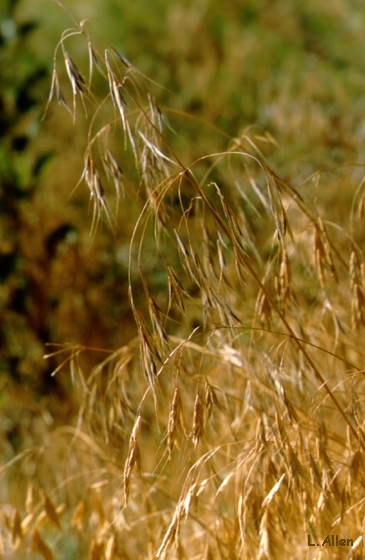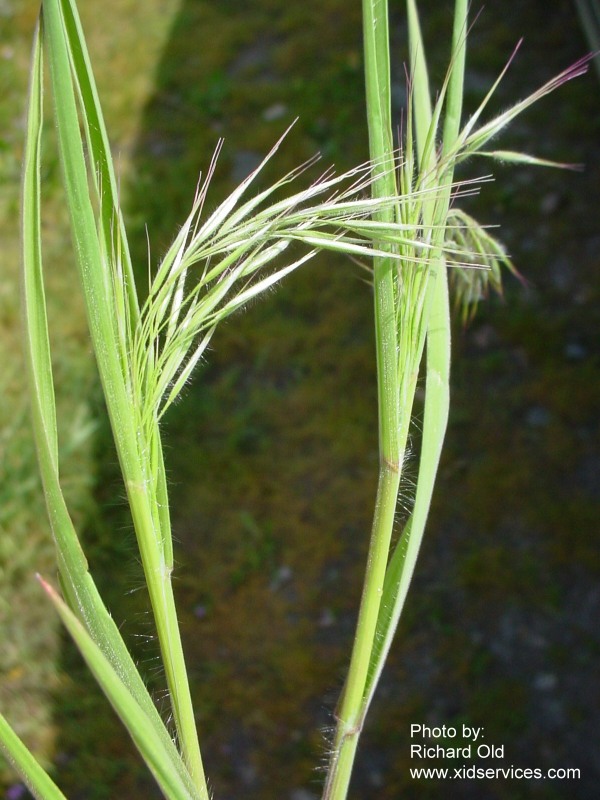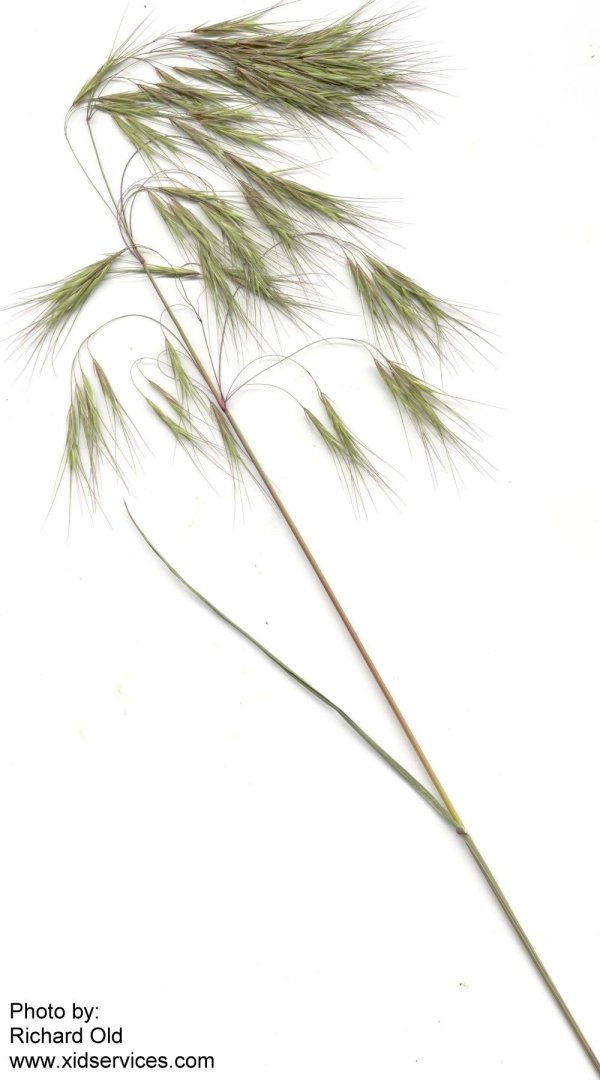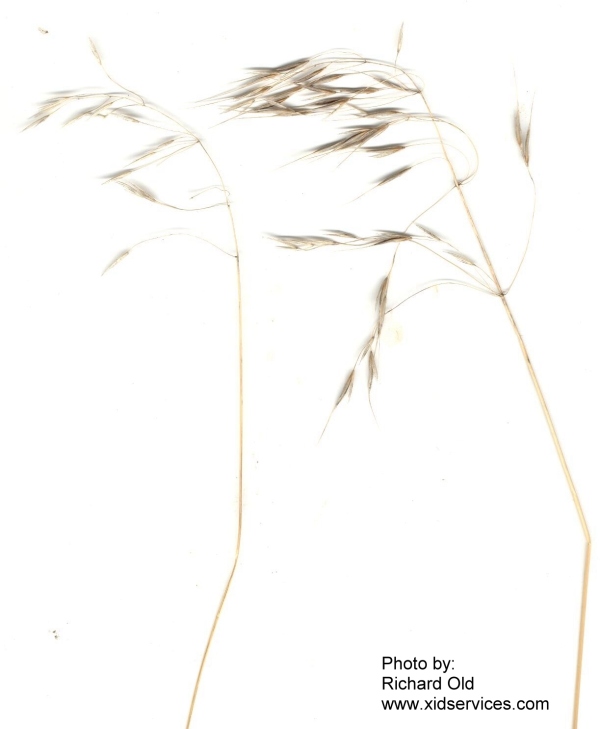Bromus tectorum
Contents
Cheatgrass
Bromus tectorum- Moss, Flora of Alberta – Common
- Global Invasive Species Database – Yes [1]
- NatureServe Rank – High [2]
- Haber, Upland – No
- Haber, Wetland – No
- CWF, Status & Invasive Range – Widespread, Prairies, S. BC
- Alberta Revegetation Guidelines – Unacceptable
- The Nature Conservancy – Yes, w/ ESA
- CBCN – No
- AB Weed – Noxious
Synonyms for Bromus tectorum L.
Anisantha tectorum (L.) Nevski
Bromus tectorum L. var. glabratus Spenner
Bromus tectorum L. var. hirsutus Regel
Bromus tectorum L. var. nudus Klett & Richt.
Remarks
An annual grass. Emerges early and is active in the cool season. Very aggressive. Responsible for near-extinction of the native grass understory of the Sagebrush-dominated intermountain plateau region of the U.S., Listed by ISSG. Introduced to Ontario prior to 1886, and separately to B.C. prior to 1889.
Causes a change in fire patterns since cheatgrass (also known as downy chess) dries quickly, creates a contuous understory of fine fuels that results in significantly more fire fuel than provided by native species. Native species and even fire-resistant shrubs are killed in the hotter fires, resulting in more available habitat for cheatgrass. Cheatgrass is a fast-growing annual and somewhat fire tolerant, so can move into a burn area very quickly. A recent concern is that areas with these recurring frequent hot fires are losing the native species in the seedbank, making future restoration very difficult.
Increasing atmospheric concentration of carbon dioxide has increased productivity of Cheatgrass and made it less palatable, resulting in increased biomass and more severe fires.
Valliant et al note that "Comparisons of different genotypes of B. tectorum in common gardens, however, illustrate that the role of this grass—whether a minor community member or an aggressive invader—turns on which genotype arrives in a region. There is no assurance that all genotypes, including some that may be pre-adapted to Canadian environments, have already reached Canada. Moreover, the detection of outcrossing in some populations suggests the de novo creation of genotypes in Canada that could emerge as further weedy threats."
[3] Link to Bugwood Invasipedia for extensive information on biology, ecology, and management of this species.
References
[4] Link to USDA Plants Profile for Bromus tectorum L. cheatgrass
Julie Beckstead, Susan E. Meyer, Brian M. Connolly, Michael B. Huck, Laura E. Street, Cheatgrass facilitates spillover of a seed bank pathogen onto native grass species, Journal of Ecology, Vol 98, No 1, ppg 168-177, 2010. Abstract [5] DOI 10.1111/j.1365-2745.2009.01599.x
|frame|none| ]]
References
Morgan T. Valliant, Richard N. Mack and Stephen J. Novak, Introduction history and population genetics of the invasive grass Bromus tectorum (Poaceae) in Canada, American Journal of Botany. 2007;94:1156-1169.







